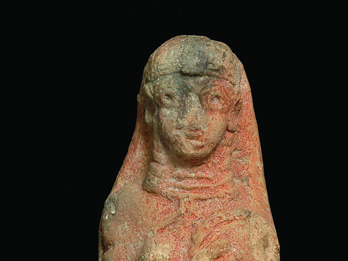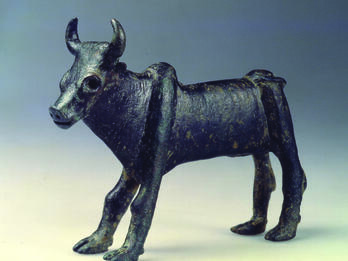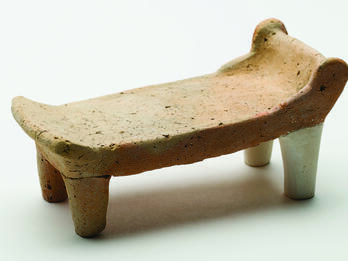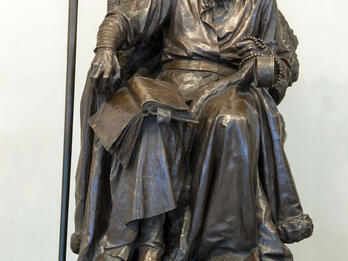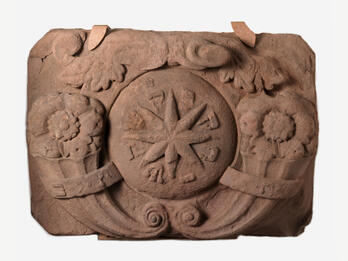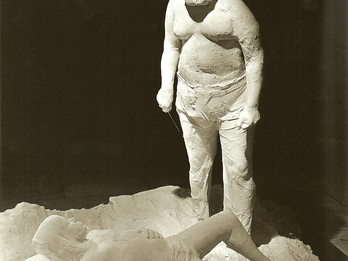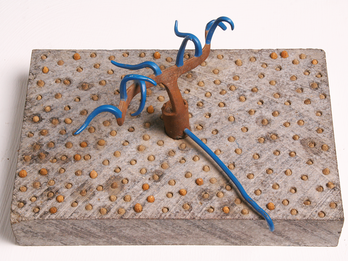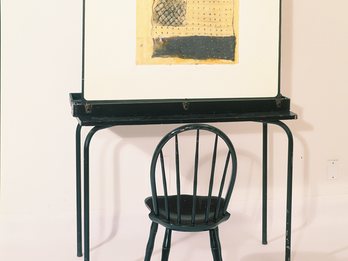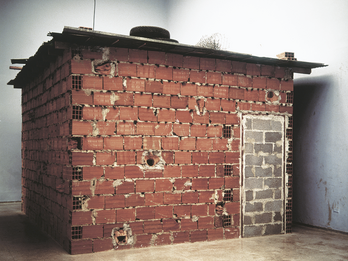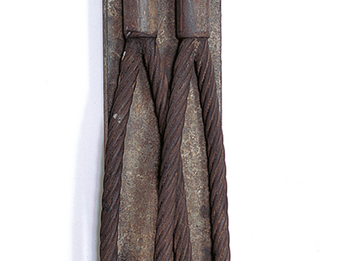Showing Results 1 - 10 of 58
Restricted
Image
There are numerous terra-cotta plaque figurines of females, some naked and others clothed, holding disks, mostly from northern Israel and Transjordan. Many come from border towns and towns whose…
Places:
Hazor, Land of Israel (Tel Hazor, Israel)
Date:
Iron Age II, 9th–8th Century BCE
Categories:
Restricted
Image
This bull figurine, 7 × 5 inches (17.5 cm × 12 cm), was cast in bronze with considerable detail. It combines highly realistic features—horns and ears, genitalia, legs and hooves—with more stylized…
Places:
Samaria, Land of Israel (Samaria, Israel)
Date:
Iron Age I, Early 12th Century BCE
Subjects:
Categories:
Restricted
Image
Since chairs and beds were valuable items and not found in average homes (people usually sat on the floor and slept on mats), it is possible that terra-cotta models like this one from Lachish…
Places:
Lachish, Land of Israel (Tel Lakhish, Israel)
Date:
Iron Age IIB, 8th Century BCE
Subjects:
Categories:
Restricted
Image
Mark Antokolski began his career as a sculptor by focusing on Jewish themes, but he soon moved on to portrayals of historical figures. This monumental sculpture, Ivan the Terrible, was purchased by…
Contributor:
Mark Antokolski
Places:
St. Petersburg, Russian Empire (Saint Petersburg, Russia)
Date:
1871
Categories:
Restricted
Image
For German Jews, it was traditional in the wedding ceremony for the groom to perform the ritual of breaking a glass in remembrance of the destruction of the Temple by hurling it or banging it against…
Contributor:
Artist Unknown
Places:
Bingen, Holy Roman Empire (Bingen, Germany)
Date:
1700
Subjects:
Categories:
Restricted
Image
Segal’s sculptural representation of the Akedah, the biblical story of Abraham’s near-sacrifice of his son Isaac, raised eyebrows when it was first exhibited. His irreverent depiction of Abraham as a…
Contributor:
George Segal
Places:
South Brunswick Township, United States of America
Date:
1973
Subjects:
Categories:
Restricted
Image
Rabinovitz’s sculptures are characterized by the use of minimal elements that are granted symbolic meaning through the text or title that accompanies them, commonly taken from the Bible or other…
Contributor:
Israel Rabinovitz
Places:
Jerusalem, Israel
Date:
1990
Subjects:
Categories:
Restricted
Image
The empty chair was a recurrent image in the work of Israeli artists. Because of its associations with the (fallen) throne of the biblical King David, it was sometimes used to represent a fallen…
Contributor:
Yigal Ozeri
Places:
New York, United States of America
Date:
1991
Subjects:
Categories:
Restricted
Image
Green on the Outside, Red on the Inside was rejected by the Venezuelan government as a contribution to the 1995 Venice Biennale. The installation consisted of a small building, resembling the majority…
Contributor:
Meyer Vaisman
Places:
New York, United States of America
Date:
1993
Subjects:
Categories:
Restricted
Image
Angels were a recurring theme in Dorchin’s sculptures, many of which include the word “angel” in their titles. Toward the 1980s, he began to use iron for most of his sculptures. This “angel” wall…
Contributor:
Yaacov Dorchin
Places:
Kefar HaHoresh, Israel
Date:
1982


